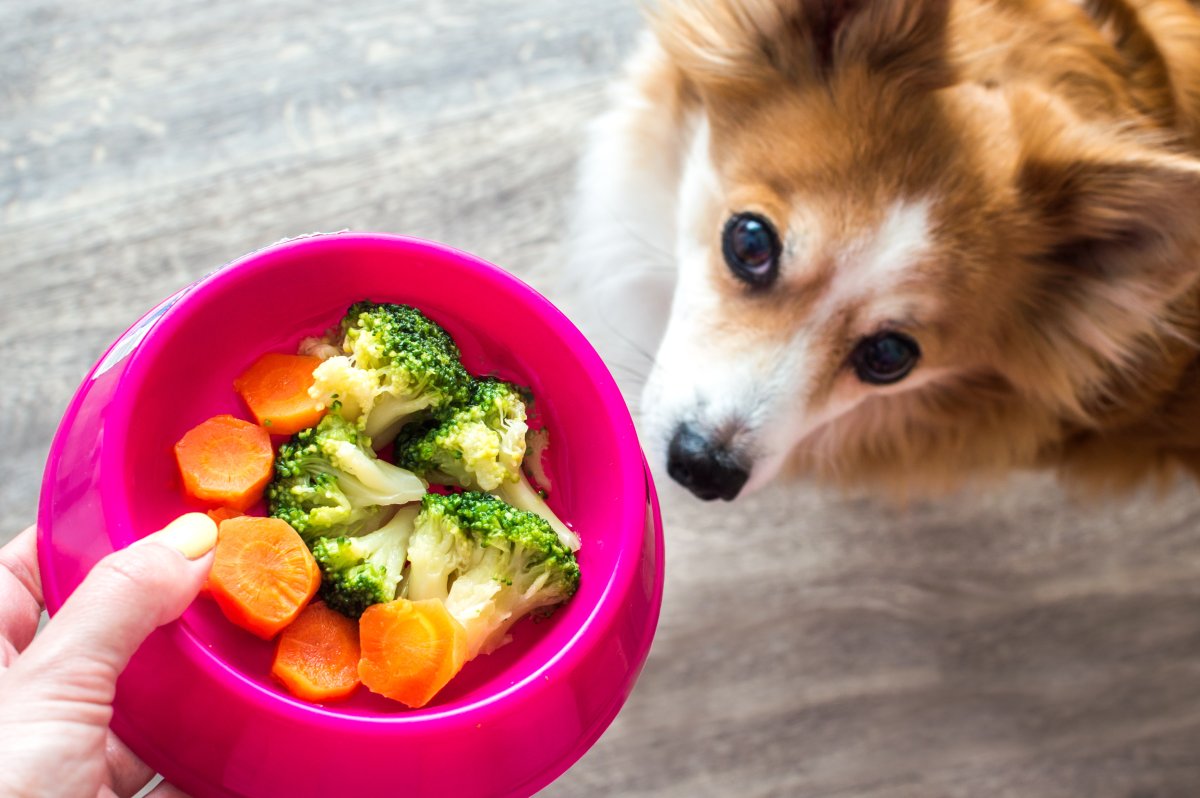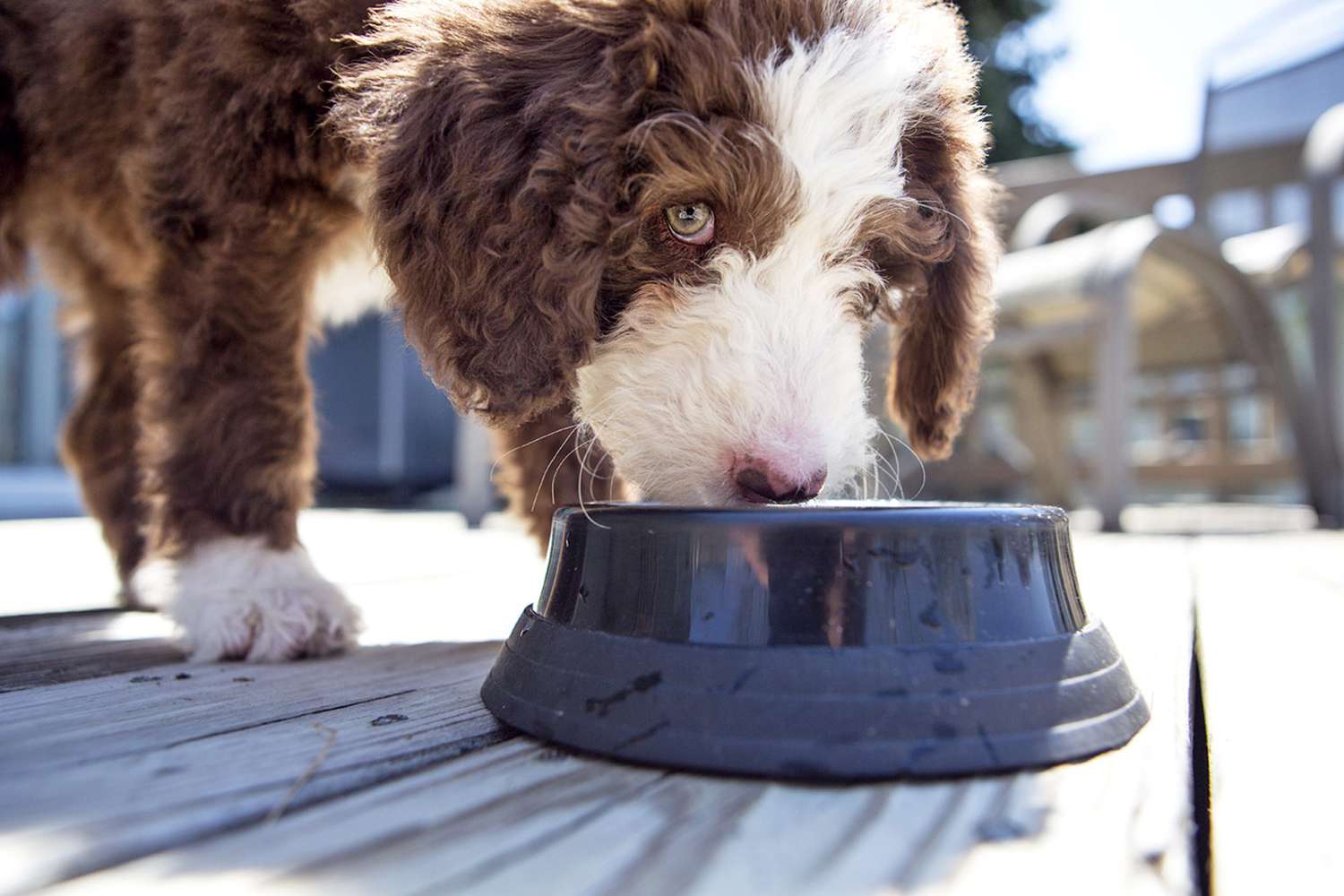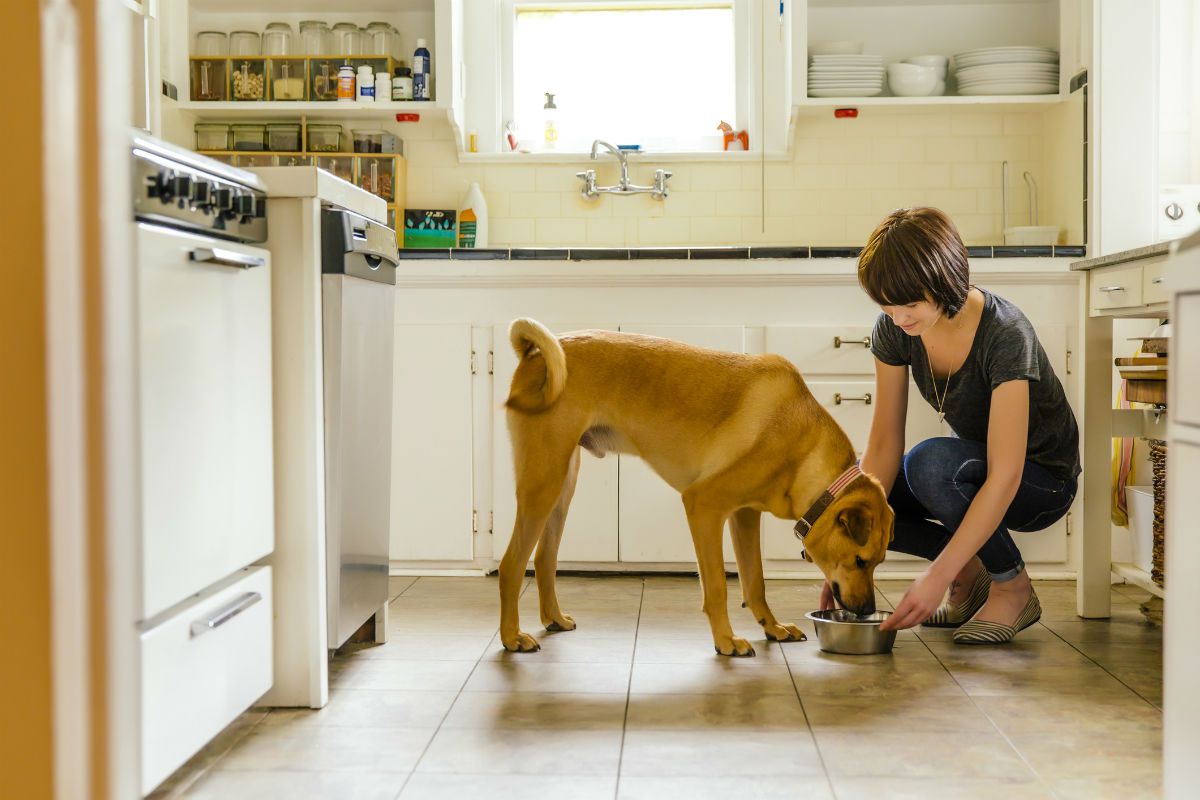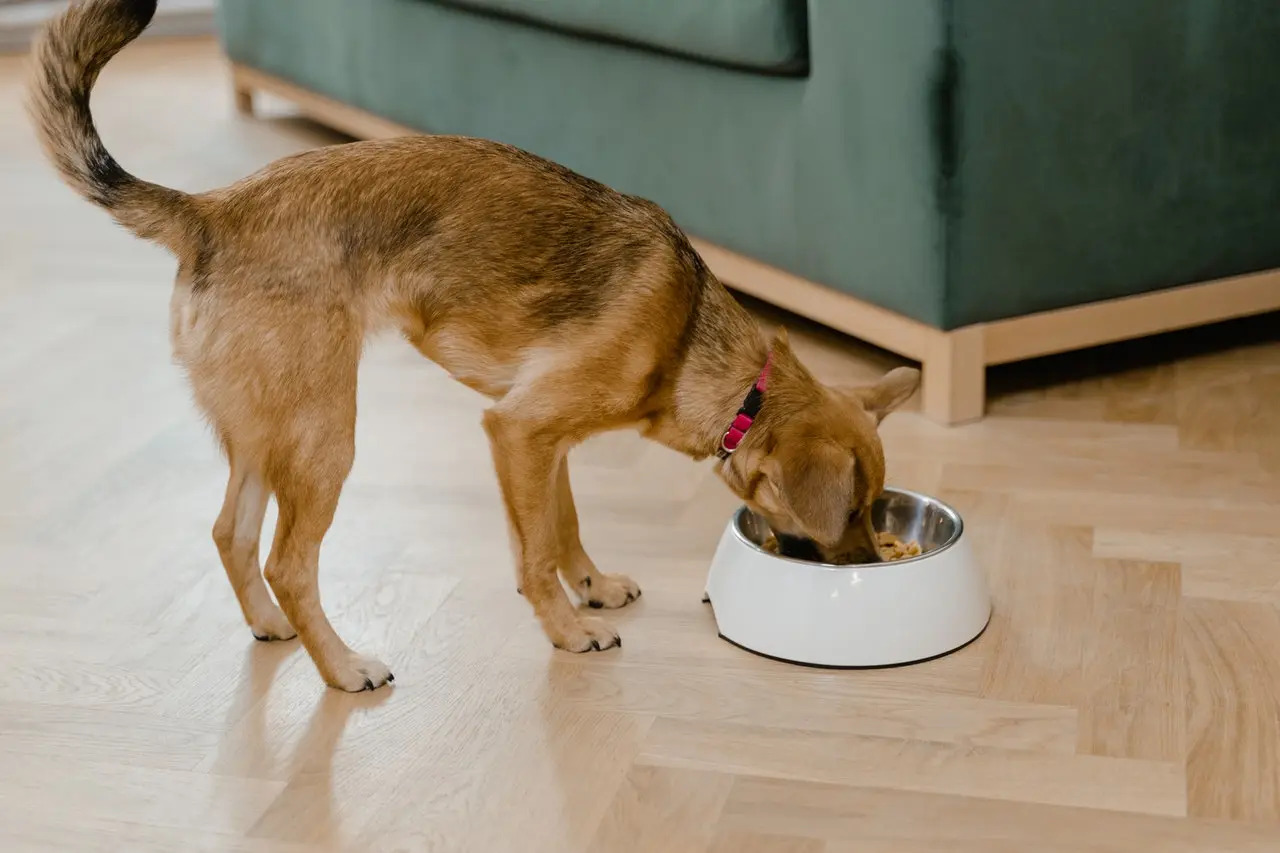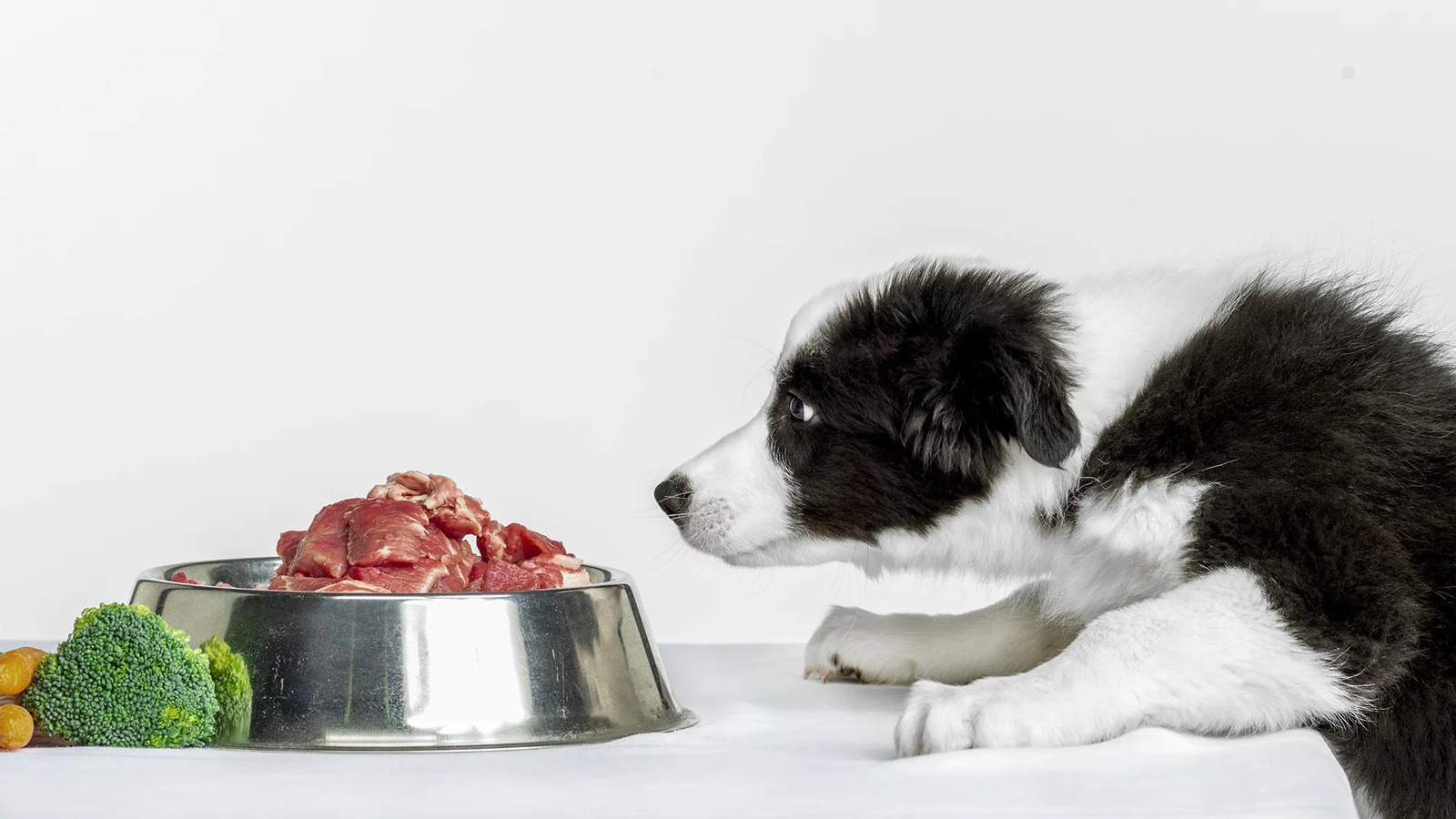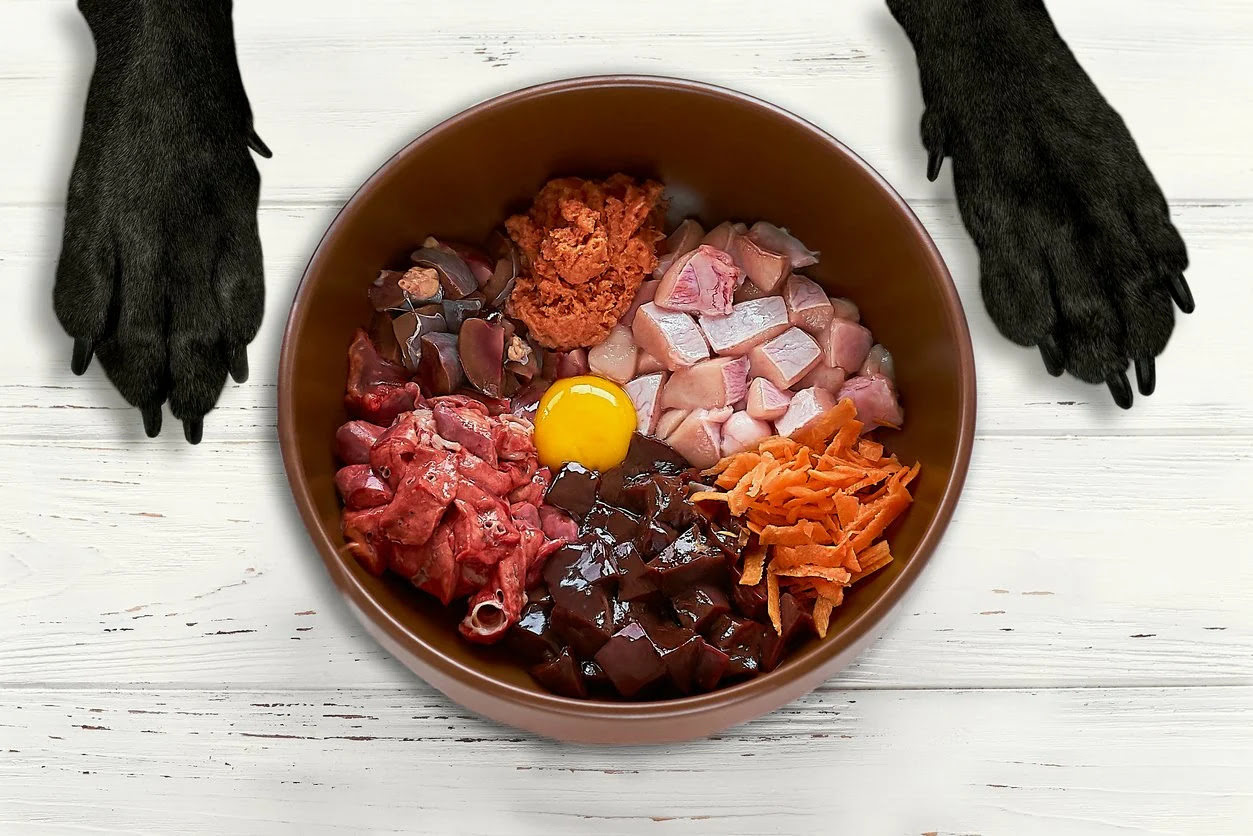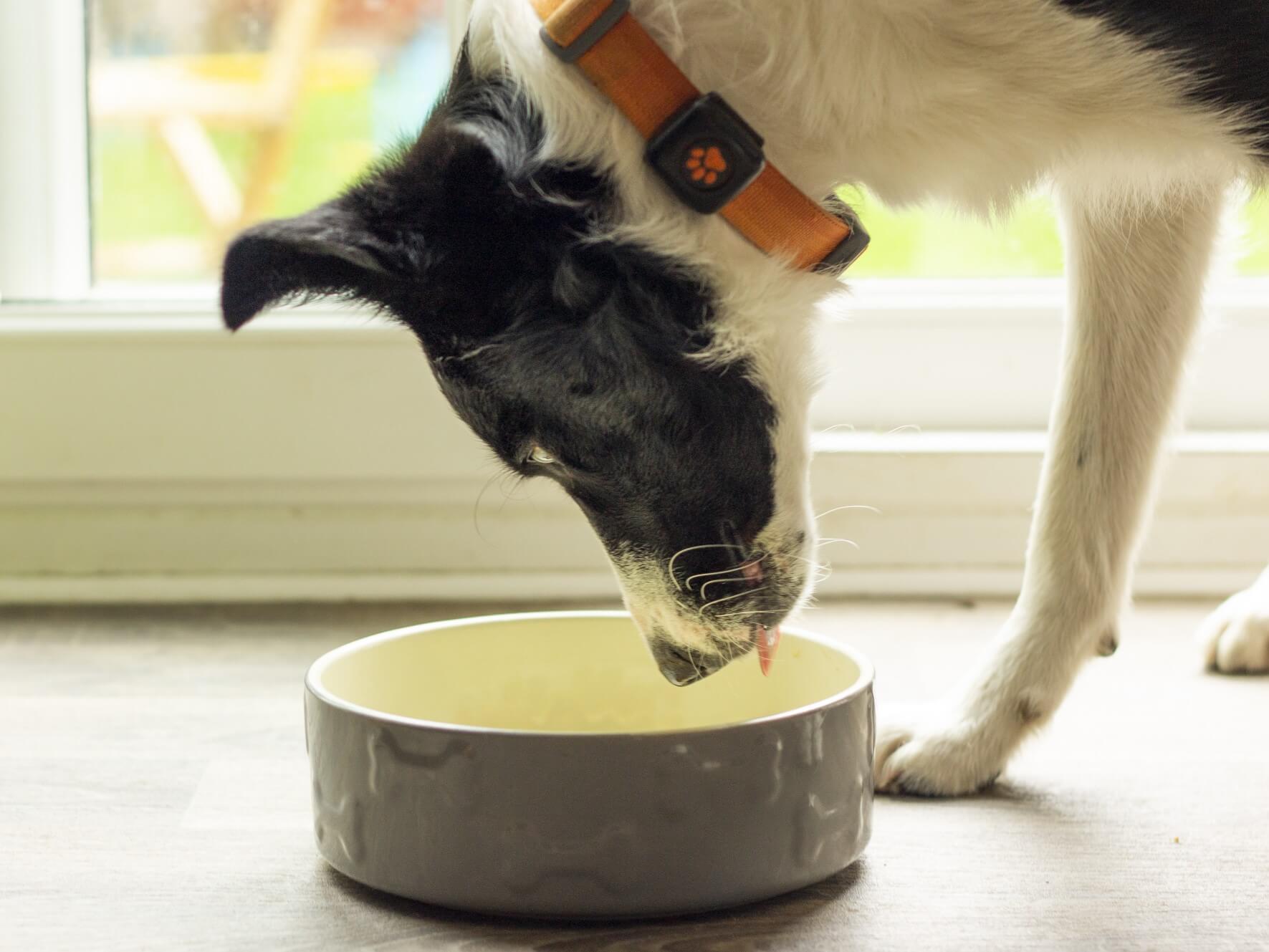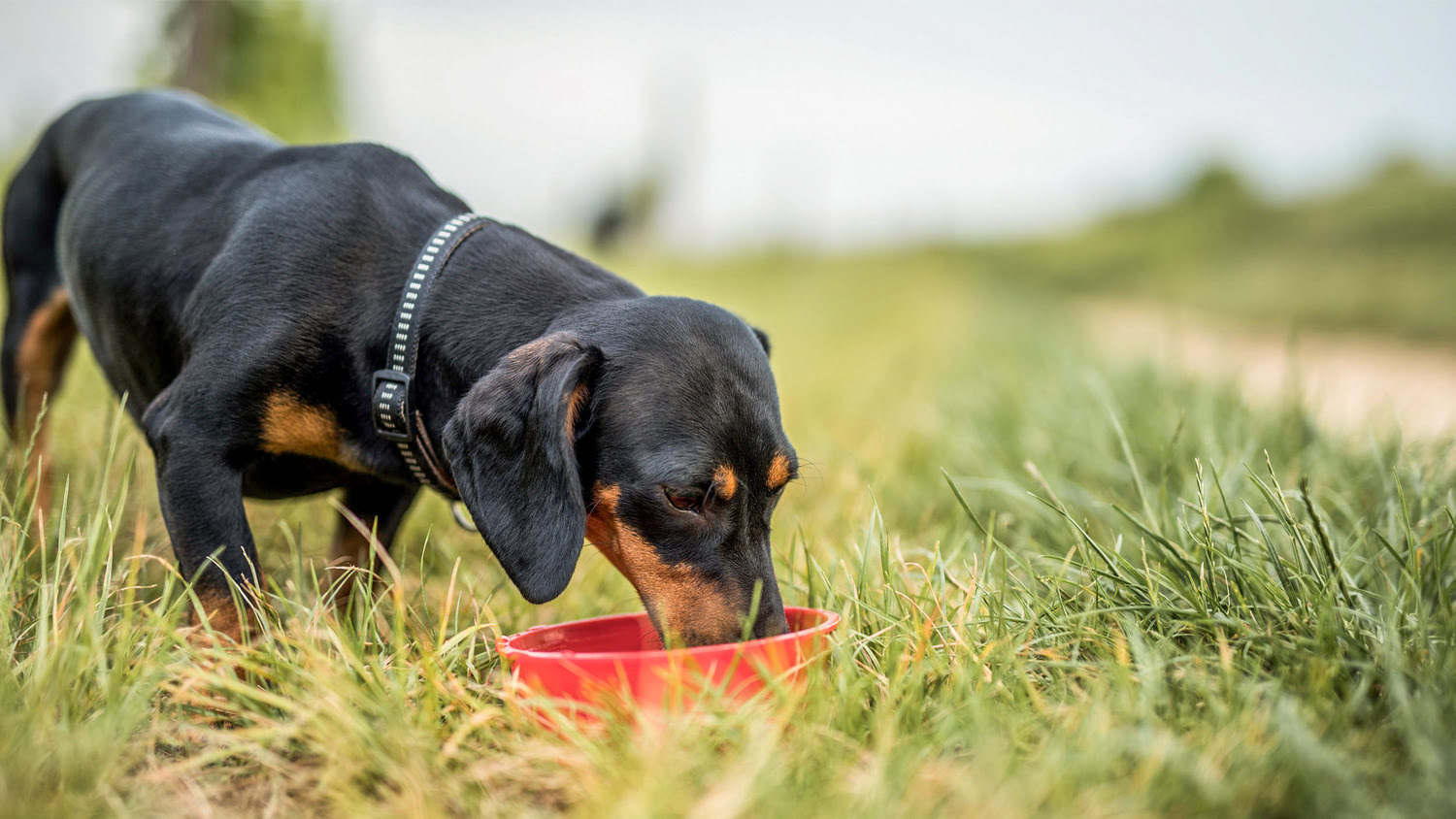Home>Health & Wellness>Nutrition & Diet>How Do I Start Feeding My Dog A Raw Diet
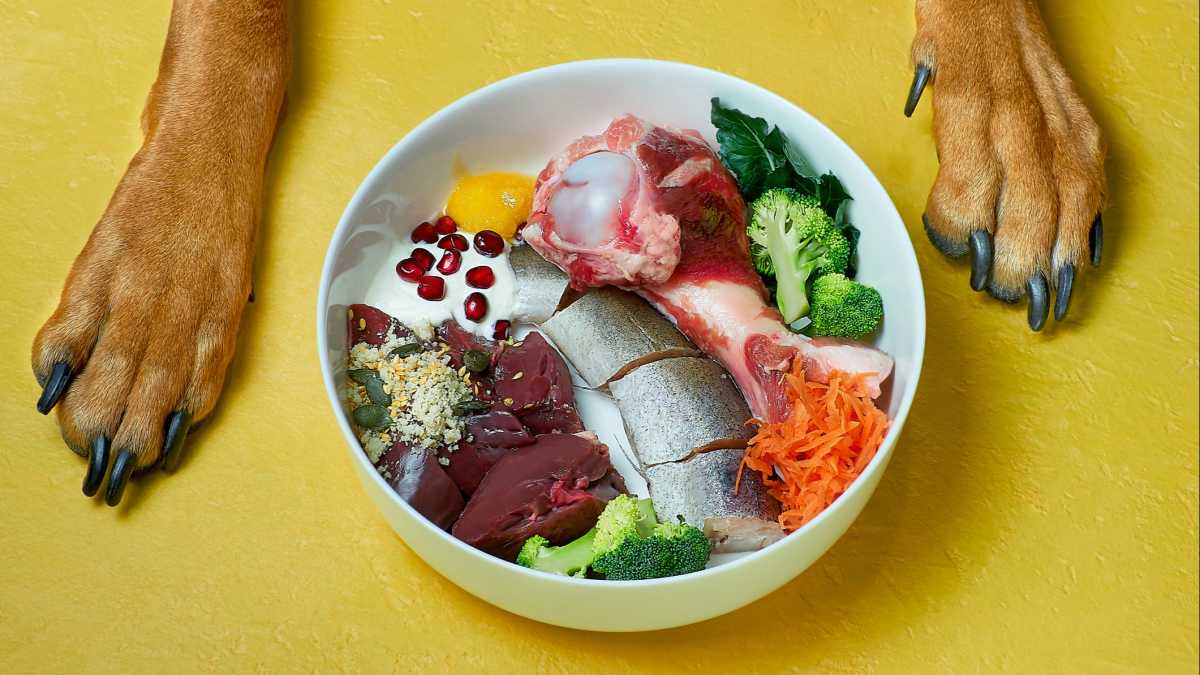

Nutrition & Diet
How Do I Start Feeding My Dog A Raw Diet
Published: January 27, 2024
Learn how to transition your dog to a raw diet for optimal nutrition and health. Discover the benefits of raw feeding for your pet.
(Many of the links in this article redirect to a specific reviewed product. Your purchase of these products through affiliate links helps to generate commission for Pawsomeoldies.com, at no extra cost. Learn more)
Table of Contents
Introduction
Feeding your dog a raw diet has gained popularity in recent years as pet owners seek to provide their furry companions with a diet that closely resembles what their wild ancestors consumed. This approach to canine nutrition involves feeding dogs a combination of raw meat, bones, organs, and sometimes fruits and vegetables. As a pet owner, it's essential to understand the potential benefits and risks associated with a raw diet before making the transition for your beloved canine companion.
The decision to transition your dog to a raw diet is not one to be taken lightly. It requires careful consideration, research, and a thorough understanding of your dog's nutritional needs. While the concept of a raw diet may seem straightforward, there are important factors to consider, including the potential health benefits, risks, and the proper way to transition your dog to this new diet.
In this comprehensive guide, we will delve into the intricacies of feeding your dog a raw diet, exploring the potential benefits, risks, and considerations associated with this nutritional approach. Additionally, we will provide practical tips on how to transition your dog to a raw diet and create a balanced meal plan to ensure your dog receives the essential nutrients needed for optimal health and well-being.
Understanding the raw diet is the first step in embarking on this nutritional journey for your dog. By gaining insight into the potential benefits and risks, you can make an informed decision that aligns with your dog's unique dietary needs. Let's explore the world of raw feeding and uncover the key aspects that every pet owner should consider when contemplating this dietary approach for their canine companion.
Read more: How Do I Switch My Dog To A Raw Food Diet
Understanding the Raw Diet
The raw diet for dogs, often referred to as the BARF diet (Biologically Appropriate Raw Food), is based on the principle of feeding dogs a diet that closely resembles what their ancestors consumed in the wild. This approach emphasizes the consumption of raw, unprocessed foods, including muscle meat, bones, organs, and occasionally fruits and vegetables. Proponents of the raw diet believe that it aligns with a dog's natural dietary needs and offers numerous potential health benefits.
One of the fundamental principles of the raw diet is the inclusion of raw meat, which serves as a primary source of protein for dogs. This can include a variety of meats such as beef, chicken, turkey, lamb, and fish. Additionally, raw bones are often included in the diet to provide essential nutrients, promote dental health, and satisfy a dog's natural instinct to chew.
Incorporating organ meats, such as liver, kidney, and heart, is another key aspect of the raw diet. These organs are rich in essential vitamins and minerals, including vitamin A, iron, and B vitamins, which are vital for a dog's overall health and well-being.
While the primary focus of the raw diet is on animal-based foods, some proponents also advocate for the inclusion of fruits and vegetables in smaller quantities. These plant-based foods can provide additional nutrients, fiber, and antioxidants, contributing to a well-rounded diet for dogs.
It's important to note that the raw diet emphasizes the exclusion of processed foods, grains, and fillers commonly found in commercial dog foods. Advocates of the raw diet argue that these ingredients are not essential for a dog's nutritional needs and may contribute to various health issues.
Understanding the raw diet involves recognizing its alignment with a dog's evolutionary history and natural dietary preferences. Proponents of this approach believe that it offers several potential benefits, including improved digestion, healthier skin and coat, increased energy levels, and better weight management. However, it's crucial to approach the raw diet with careful consideration and awareness of the potential risks and challenges associated with this nutritional approach.
By gaining a deeper understanding of the raw diet, pet owners can make informed decisions regarding their dog's nutritional needs and overall well-being. In the following sections, we will explore the specific benefits, risks, and considerations associated with feeding your dog a raw diet, providing valuable insights to guide you through this dietary journey for your canine companion.
Benefits of Feeding Your Dog a Raw Diet
Feeding your dog a raw diet offers a myriad of potential benefits that align with their natural dietary needs and can contribute to their overall health and well-being. Understanding these advantages is crucial for pet owners considering the transition to a raw diet for their canine companions.
-
Improved Digestion: A raw diet can promote healthier digestion in dogs. The absence of processed foods and fillers, which are common in commercial dog foods, allows for easier digestion and absorption of essential nutrients. This can lead to reduced instances of gastrointestinal issues and firmer stools.
-
Healthier Skin and Coat: The raw diet's emphasis on natural, unprocessed foods can contribute to healthier skin and a shinier coat for dogs. The inclusion of essential fatty acids and nutrients from raw meats and organ meats can help alleviate skin issues and promote a lustrous, healthy coat.
-
Enhanced Dental Health: Feeding raw bones as part of the diet can support dental health in dogs. Gnawing on raw bones helps naturally clean teeth, reduce plaque buildup, and maintain healthy gums, potentially lowering the risk of dental problems.
-
Increased Energy Levels: Many pet owners report that their dogs exhibit increased energy and vitality when switched to a raw diet. The nutrient-dense nature of raw foods, coupled with improved digestion, can lead to higher energy levels and overall improved vitality in dogs.
-
Better Weight Management: The raw diet's focus on natural, unprocessed foods can contribute to better weight management in dogs. With a balanced raw diet, dogs are less likely to experience excessive weight gain or obesity, promoting overall health and longevity.
-
Potential Allergy Relief: Some dogs may experience relief from food allergies or sensitivities when switched to a raw diet. By eliminating common allergens found in commercial dog foods, such as grains and artificial additives, dogs may experience reduced allergic reactions and improved overall comfort.
-
Support for Overall Health: Advocates of the raw diet often highlight its potential to support a dog's overall health, including improved immune function, reduced inflammation, and a decreased risk of chronic diseases.
Understanding these potential benefits is essential for pet owners considering the transition to a raw diet for their dogs. While these advantages are compelling, it's important to weigh them against the potential risks and considerations associated with feeding your dog a raw diet, which we will explore in the following sections.
Risks and Considerations
While the raw diet for dogs offers compelling benefits, it's crucial for pet owners to be aware of the potential risks and considerations associated with this nutritional approach. Understanding these factors is essential for making an informed decision and ensuring the well-being of your canine companion.
-
Bacterial Contamination: Raw meat, bones, and organs can harbor harmful bacteria such as Salmonella and E. coli, posing a risk of foodborne illness for dogs. Additionally, handling raw meat can expose pet owners to these pathogens, potentially leading to health concerns for both the dog and the owner.
-
Nutritional Imbalance: Creating a balanced raw diet that meets all of a dog's nutritional needs can be challenging. Without careful planning and consideration, dogs may be at risk of nutrient deficiencies or imbalances, potentially leading to health issues over time.
-
Potential Choking Hazards: Feeding raw bones, while beneficial for dental health, carries the risk of choking or causing gastrointestinal obstructions in dogs. It's essential to select appropriate bone sizes and monitor your dog during bone consumption to mitigate these risks.
-
Cost and Convenience: Feeding a raw diet can be more expensive and time-consuming than traditional commercial dog foods. Sourcing high-quality raw ingredients and properly preparing balanced meals may require additional effort and financial investment.
-
Transition Challenges: Some dogs may experience digestive upset or resistance when transitioning to a raw diet. Gradually introducing raw foods and monitoring your dog's response is crucial to minimize potential digestive issues during the transition period.
-
Owner Education and Commitment: Successfully implementing a raw diet requires a deep understanding of canine nutrition and a commitment to providing a balanced and varied diet for your dog. Pet owners must be willing to invest time and effort in researching, meal planning, and ensuring their dog's nutritional needs are met.
-
Health and Safety Concerns: Certain dogs, such as puppies, senior dogs, or those with underlying health conditions, may have specific dietary requirements or health concerns that need to be carefully considered before transitioning to a raw diet. Consulting with a veterinarian is essential to address individual health considerations.
-
Regulatory and Legal Considerations: In some regions, there may be regulations or legal requirements related to feeding raw diets to pets. It's important for pet owners to be aware of any applicable laws or guidelines governing the feeding of raw foods to dogs.
By acknowledging these risks and considerations, pet owners can make informed decisions and take necessary precautions when considering a raw diet for their dogs. Consulting with a veterinarian or a canine nutrition specialist can provide valuable guidance in navigating these potential challenges and ensuring the health and well-being of your canine companion.
How to Transition Your Dog to a Raw Diet
Transitioning your dog to a raw diet requires a gradual and mindful approach to minimize digestive upset and ensure a smooth adjustment to the new dietary regimen. The following steps can guide pet owners through the transition process:
-
Research and Preparation: Before initiating the transition, conduct thorough research on raw feeding for dogs. Familiarize yourself with the principles of a balanced raw diet, including the appropriate ratio of meat, bones, and organs. Additionally, identify reputable sources for obtaining high-quality raw ingredients to form the foundation of your dog's new diet.
-
Gradual Introduction: Begin the transition by gradually introducing small amounts of raw food into your dog's existing diet. This can involve mixing a small portion of raw meat or organs with their regular food. Slowly increase the proportion of raw food over the course of several days to allow your dog's digestive system to adapt to the new diet.
-
Monitor Your Dog's Response: Pay close attention to your dog's response during the transition period. Observe their stool consistency, energy levels, and overall well-being. If you notice any signs of digestive upset, such as diarrhea or vomiting, consider slowing down the transition process or adjusting the composition of the raw diet.
-
Bone Introduction: Introduce raw bones gradually, as they play a crucial role in a balanced raw diet. Begin with softer bones, such as chicken necks or wings, to allow your dog to adjust to the new chewing experience. Monitor bone consumption to ensure safety and minimize the risk of choking or gastrointestinal issues.
-
Variety and Balance: Aim to incorporate a variety of protein sources, including beef, poultry, and fish, to provide a balanced array of nutrients. Additionally, include a diverse selection of organ meats to ensure your dog receives essential vitamins and minerals. Strive for a balanced diet that reflects the natural dietary diversity of dogs in the wild.
-
Consult with a Veterinarian: Seek guidance from a veterinarian or a canine nutrition specialist throughout the transition process. They can offer valuable insights, address any concerns, and provide tailored recommendations based on your dog's individual needs, health status, and dietary requirements.
By following these steps and maintaining a patient and attentive approach, pet owners can facilitate a successful transition to a raw diet for their dogs. It's essential to prioritize your dog's well-being and ensure that the new dietary regimen aligns with their nutritional needs and overall health.
Creating a Balanced Raw Diet for Your Dog
Crafting a balanced raw diet for your dog is a fundamental aspect of transitioning to this nutritional approach. A well-rounded raw diet should encompass a variety of essential nutrients to support your dog's overall health and vitality. Here's a comprehensive guide to creating a balanced raw diet for your canine companion:
1. Protein Selection:
Incorporate a diverse range of protein sources, including beef, chicken, turkey, lamb, and fish. These proteins serve as the primary building blocks for your dog's muscles, organs, and immune system. Aim for a balance of lean meats and fattier cuts to provide a spectrum of essential nutrients.
2. Organ Meats:
Include organ meats such as liver, kidney, and heart in your dog's raw diet. Organ meats are rich in vital nutrients, including vitamin A, iron, and B vitamins, which are essential for your dog's overall health and well-being. Organ meats should constitute a portion of the overall meat content in the diet.
3. Raw Bones:
Incorporate raw bones as a crucial component of your dog's diet. Raw bones provide essential minerals, promote dental health, and satisfy your dog's natural instinct to chew. Opt for softer bones, such as chicken necks or wings, to minimize the risk of dental fractures and choking hazards.
Read more: How To Feed My Dog A Ketogenic Diet
4. Fruits and Vegetables:
While the primary focus of a raw diet is on animal-based foods, consider including small quantities of fruits and vegetables to provide additional nutrients, fiber, and antioxidants. Suitable options include carrots, apples, spinach, and broccoli, which can contribute to a well-rounded diet for your dog.
5. Essential Fatty Acids:
Ensure that your dog's raw diet includes sources of essential fatty acids, such as omega-3 and omega-6 fatty acids. Incorporating fish, flaxseed, or chia seeds can provide these crucial fatty acids, supporting your dog's skin and coat health, joint function, and overall well-being.
6. Nutritional Supplements:
Consider incorporating high-quality nutritional supplements to bolster your dog's raw diet. Supplements such as fish oil, probiotics, and multivitamins can help address potential nutrient gaps and support your dog's digestive health and immune function.
7. Meal Planning and Balance:
Strive for a balanced meal plan that reflects the natural dietary diversity of dogs. Ensure that each meal comprises an appropriate ratio of muscle meat, bones, organs, and optional fruits and vegetables. Variety and balance are key to meeting your dog's nutritional requirements.
By carefully considering these components and crafting a well-balanced raw diet for your dog, you can provide them with a nutritionally complete and wholesome dietary regimen. Prioritize the quality and sourcing of raw ingredients, and consult with a veterinarian or a canine nutrition specialist to ensure that your dog's unique nutritional needs are met through their raw diet.
Tips for Feeding Your Dog a Raw Diet
Feeding your dog a raw diet requires careful attention to detail and a commitment to providing a nutritionally balanced and wholesome meal plan. To ensure the success of this dietary approach, consider the following tips:
-
Quality Sourcing: Prioritize high-quality, human-grade raw ingredients for your dog's diet. Seek out reputable suppliers and butchers that offer fresh, locally sourced meats, organs, and bones. Opting for organic and grass-fed options can further enhance the nutritional value of the raw diet.
-
Food Safety: Maintain strict food safety practices when handling and preparing raw ingredients. Keep raw meats and organs refrigerated or frozen until use, and thoroughly clean all surfaces, utensils, and feeding bowls to minimize the risk of bacterial contamination.
-
Meal Variety: Introduce a diverse array of proteins, including beef, poultry, and fish, to provide a spectrum of essential nutrients and prevent dietary monotony. Incorporating variety also aligns with a dog's natural dietary preferences and promotes overall meal enjoyment.
-
Portion Control: Tailor portion sizes to your dog's individual needs, taking into account factors such as age, activity level, and metabolic rate. Avoid overfeeding and monitor your dog's body condition to adjust portion sizes as needed to maintain a healthy weight.
-
Supervise Bone Consumption: When offering raw bones, supervise your dog's chewing to ensure safe consumption. Select appropriately sized bones that match your dog's chewing capabilities and avoid bones that pose choking hazards or dental risks.
-
Gradual Transition: If transitioning from a commercial diet to a raw diet, do so gradually to allow your dog's digestive system to adapt. Slowly increase the proportion of raw food while monitoring your dog's response and adjusting the transition pace as needed.
-
Consult with Professionals: Seek guidance from a veterinarian or a certified canine nutritionist to develop a tailored raw diet plan that aligns with your dog's specific nutritional requirements. Professional input can address any concerns and optimize the nutritional balance of the raw diet.
-
Regular Monitoring: Monitor your dog's overall health, including their coat condition, energy levels, and digestive well-being, when on a raw diet. Regular veterinary check-ups can provide valuable insights into your dog's health and the effectiveness of their dietary regimen.
-
Education and Awareness: Stay informed about the latest developments and best practices in raw feeding for dogs. Continuously educate yourself on canine nutrition to make informed decisions and adapt your dog's diet based on emerging knowledge and research.
By implementing these tips, pet owners can navigate the intricacies of feeding their dogs a raw diet with confidence and attentiveness, ultimately providing their canine companions with a nutritionally rich and fulfilling dietary experience.
Conclusion
In conclusion, the decision to transition your dog to a raw diet is a significant undertaking that requires careful consideration, research, and a deep understanding of your dog's nutritional needs. The raw diet, rooted in the principle of providing dogs with a diet that mirrors their ancestral eating habits, offers a range of potential benefits, including improved digestion, healthier skin and coat, enhanced dental health, increased energy levels, better weight management, potential allergy relief, and overall support for a dog's well-being.
However, it's essential for pet owners to be mindful of the potential risks and considerations associated with the raw diet, such as bacterial contamination, nutritional imbalance, choking hazards, cost and convenience factors, transition challenges, and the need for owner education and commitment. These factors underscore the importance of approaching the raw diet with caution and seeking professional guidance to ensure the health and safety of your canine companion.
When embarking on the journey of transitioning your dog to a raw diet, it's crucial to follow a gradual and mindful approach, incorporating a diverse array of protein sources, organ meats, raw bones, and optional fruits and vegetables to create a balanced meal plan. Additionally, prioritizing quality sourcing, food safety, portion control, and gradual transition is essential for the successful implementation of a raw diet.
Consulting with a veterinarian or a certified canine nutritionist throughout the transition process can provide invaluable insights and tailored recommendations based on your dog's individual needs and health status. Regular monitoring of your dog's response to the raw diet, coupled with a commitment to ongoing education and awareness of best practices, can further contribute to the success of this dietary approach.
Ultimately, the decision to feed your dog a raw diet should be made with a thorough understanding of the potential benefits, risks, and considerations, coupled with a dedication to providing a nutritionally balanced and wholesome meal plan that aligns with your dog's unique dietary requirements. By approaching the raw diet with informed decision-making and a commitment to your dog's well-being, you can embark on this nutritional journey with confidence and attentiveness, ultimately providing your canine companion with a nutritionally rich and fulfilling dietary experience.
